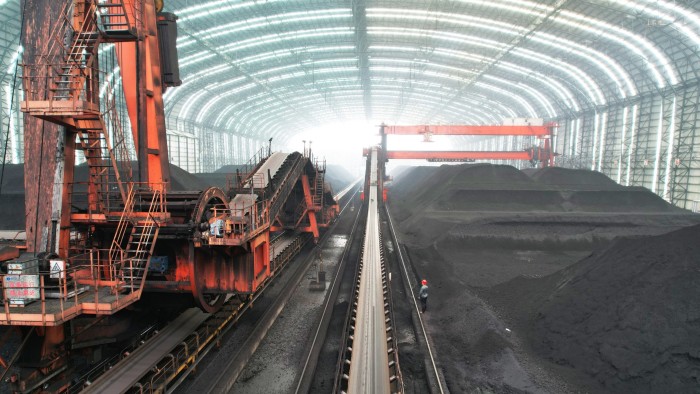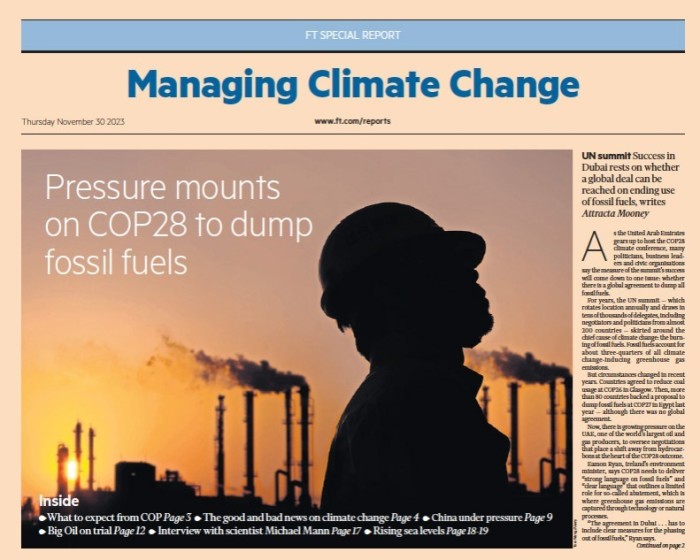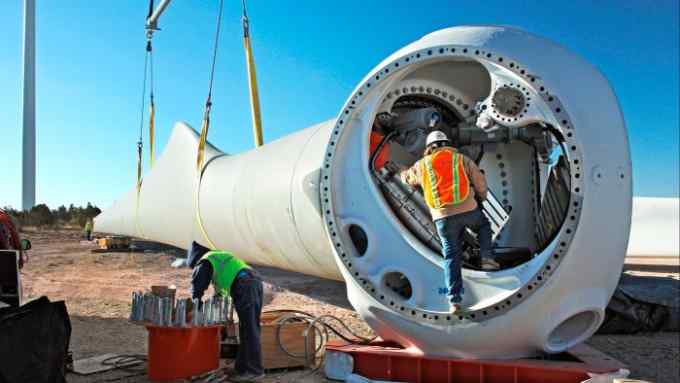China’s coal habit casts doubt on Xi’s climate promises

Simply sign up to the Climate change myFT Digest -- delivered directly to your inbox.
In mid-October, as the Israel-Hamas war threatened to spill into a regional conflict, Sultan al-Jaber travelled to Beijing in pursuit of a diplomatic breakthrough on another existential problem: China’s climate change policy.
It was the third trip by the president-designate of the UN COP28 climate summit to China this year. And his quiet shuttle diplomacy — albeit overshadowed by the conflict in the Middle East — highlights a deepening concern among western diplomats and experts that China’s President Xi Jinping might be wavering in his commitment to fight climate change.
China is the world’s biggest emitter of greenhouse gases, accounting for about 30 per cent of the global total, due to a massive reliance on coal-fuelled industry and power stations. But it is developing renewable energy rapidly. In 2020, Xi pledged two key targets — known as the shuang tan. First, that the country of 1.4bn people would reach peak CO₂ emissions by 2030. Second, that China will achieve net zero emissions by 2060.
The rise of China’s world-beating clean tech industry has propelled stunning growth in renewable energy installations, drawing cautious optimism over national climate change policy. Since 2021, though, the number of new coal-fired power plants has also surged, sparking fears that Xi’s policymakers are prioritising energy security and economic growth over climate pledges.
“If you look across China’s clean tech sector — wind, solar, electric vehicles and energy storage — those are now just snowball[ing] by themselves,” says Li Shuo, director of the China Climate Hub at the Asia Society Policy Institute in the US. “But you still need to deal with the dirty side of the energy system.”
According to data from the Centre for Research on Energy and Clean Air, a European think-tank, a “spree” of permits for new coal power plants in China, which started in mid-2022, has continued through 2023. Taking into account projects announced or in the preparation stage, but not yet permitted, China’s coal power capacity could still rise by 33 per cent from 2022 levels, according to CREA.
Li points to a “long list” of issues that have battered Chinese climate change momentum since around mid-2021. It includes a spate of blackouts in China and the Russia-Ukraine war, which contributed to anxieties around energy security. The country’s macroeconomic slowdown and property crisis have shifted the government’s focus back to growth and protecting jobs.
The deterioration of US-China relations to a new low has also hampered progress. Talks between Xi’s envoy Xie Zhenhua and his US counterpart John Kerry were frozen for almost a year following the visit of then-US House Speaker Nancy Pelosi to Taiwan in 2022.
But, in a sign that tensions may be easing, the pair formally reignited bilateral climate negotiations in July and have held further talks since then. At a meeting in San Francisco this month, US President Joe Biden and President Xi also expressed renewed willingness to co-operate on climate policy and to accelerate the rollout of clean energy.
Both countries agreed to include a broader array of greenhouse gases in their existing 2035 climate targets, including methane and nitrous oxide (previous commitments by China covered only carbon dioxide).
Many in the west believe China’s leadership at COP is needed to encourage developing nations to agree on a new global emissions stocktake, as well as a new fund for loss and damage. However, the FT reported only in July that China, backed up by Saudi Arabia, had obstructed G20 climate negotiations in India. China refused to debate targets to reduce total emissions by almost half by 2030, and rejected an agreement for global emissions to peak by 2025.
Michal Meidan, director of the China Energy Programme at the Oxford Institute for Energy Studies, points out that the reversion to coal is, at the least, “complicating” the outlook for China’s longer-term goals.
“China’s carbon emissions will peak before 2030,” she says. “But how high, and how soon before 2030? And then, in order to undo all of that before 2060, how much is it going to cost? How many stranded assets? What does it mean for people employed by the coal sector? All of those are open questions.”
Meidan adds that, while the pace and breadth of China’s renewable energy achievements often go unappreciated in the west, the mood among Chinese policymakers appears to have shifted.

This article is part of an FT special report on Managing Climate Change
“Two years ago, there were lots of voices in Beijing saying we can peak in 2026-2027 at a relatively low rate. Those voices are softer now,” she says.
Ahead of COP, there is also concern that moves by western capitals to block Chinese companies from clean tech investment will weaken the west’s case in encouraging China to strengthen its climate commitments. That includes Biden’s Inflation Reduction Act, which doles out hundreds of billions of dollars in clean tech subsidies while blocking Chinese involvement, as well as the EU’s decision in September to launch an anti-subsidy probe into China’s electric vehicle industry, to shield European manufacturers before they are priced out.
“I don’t think China is naive enough to believe this will be sorted in the climate negotiations, but the Chinese side will explicitly register their concern regarding unilateralism and trade measures,” says Li at the Asia Society.
“Trade politics is definitely getting into the climate space.”
Climate Capital

Where climate change meets business, markets and politics. Explore the FT’s coverage here.
Are you curious about the FT’s environmental sustainability commitments? Find out more about our science-based targets here

Comments